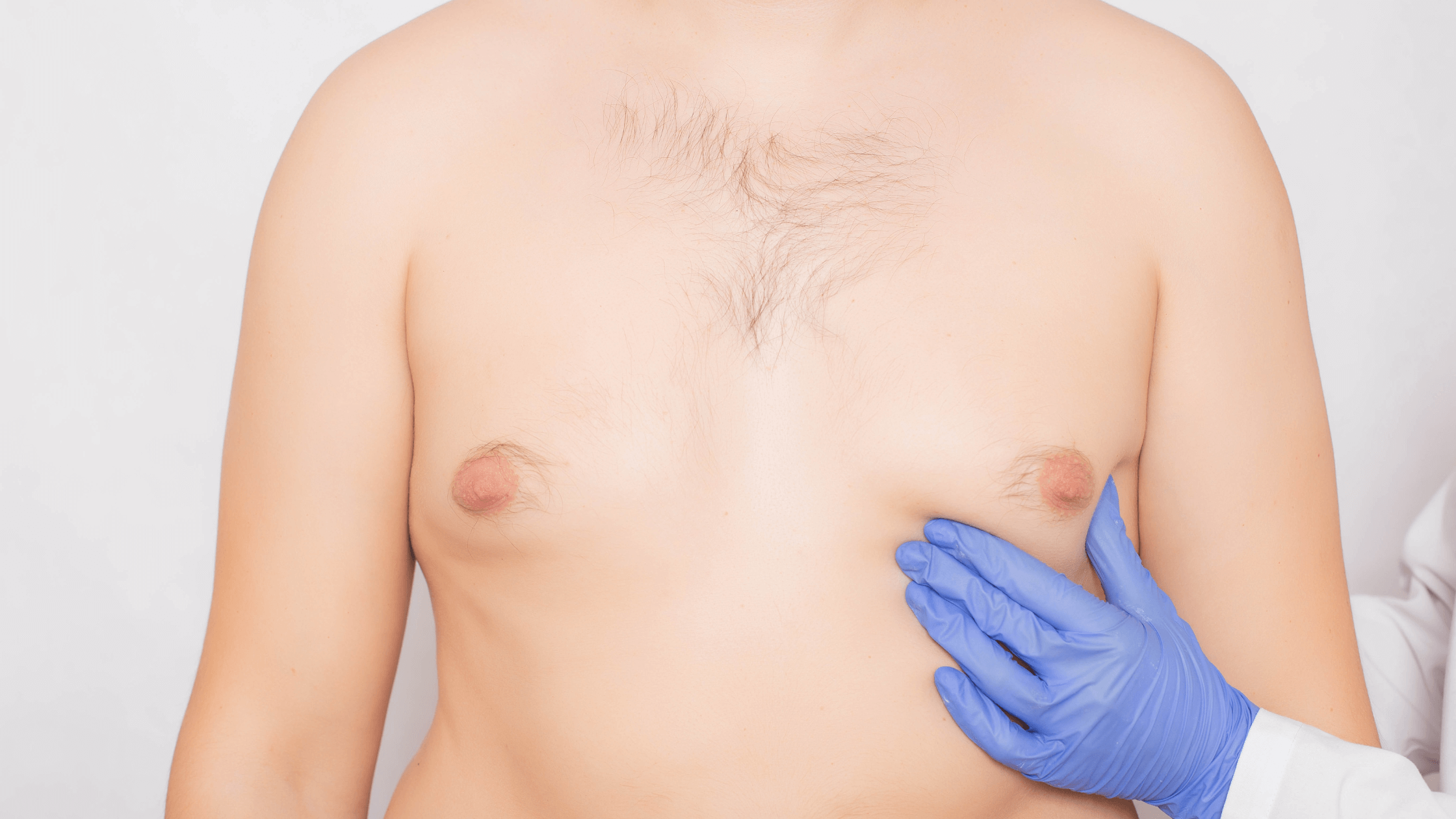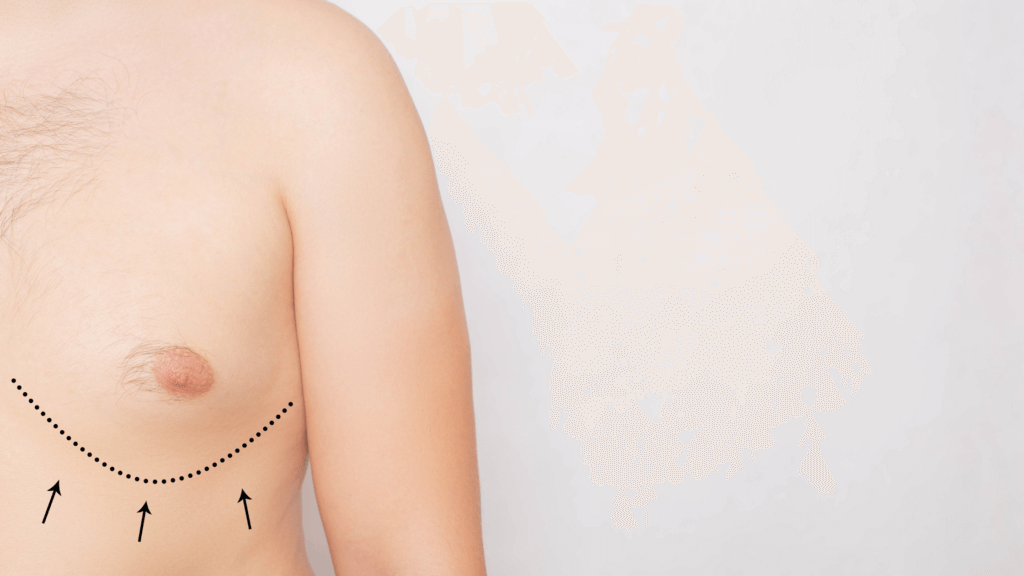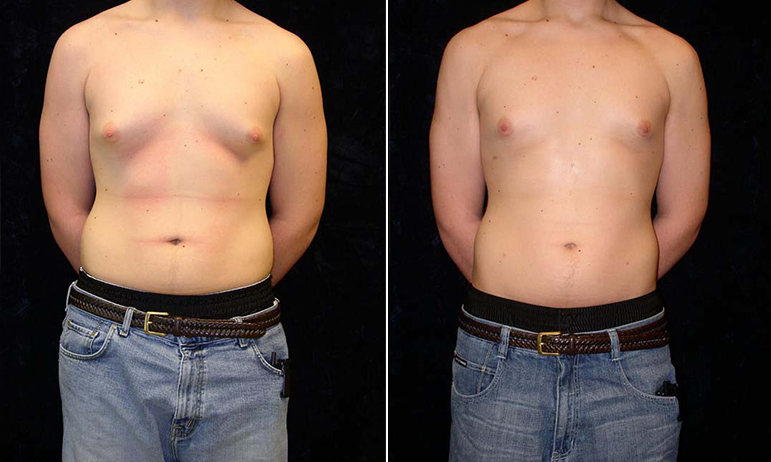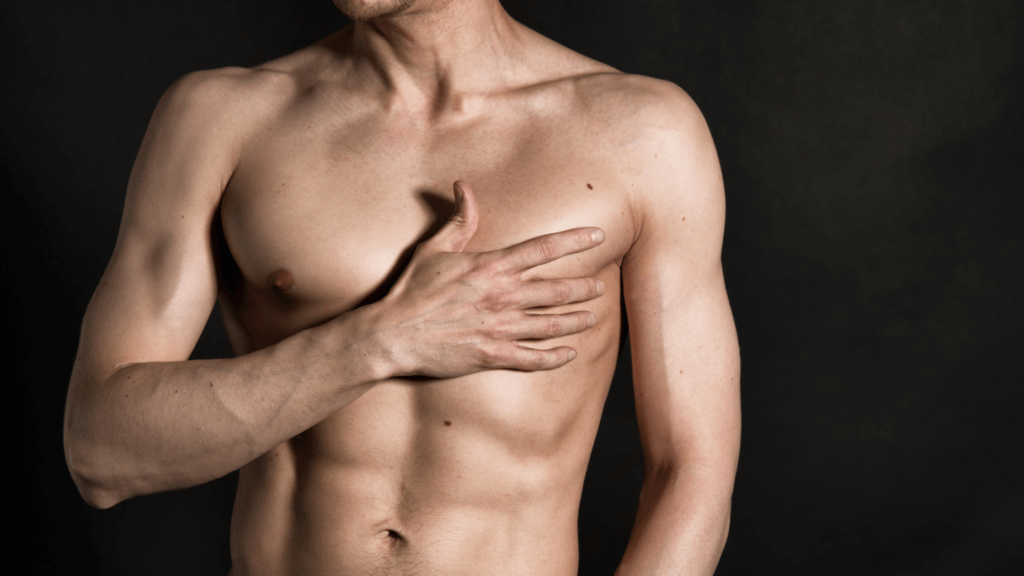
Aesthetica Editorial Team

Oh, “moobs” and “man boobs”—those pesky terms that have become a not-so-funny punchline for guys dealing with gynecomastia.
Let’s be real, this condition isn’t a joke. Gynecomastia can be acutely distressing, especially for teenagers starting to navigate the complex worlds of self-image, socialization, and dating. It’s tough when you’re feeling self-conscious about your body in a locker room, at the beach, or even on a date.
Guess what, though? You’re far from alone in this, as gynecomastia affects a whopping 50 to 65% of men around the world!
The good news is that we’ve got a real-life superhero ready to tackle this issue — Dr. Phillip Chang of Aesthetica. He’s got the skills, the knowledge, and the understanding to help you kick those “man boobs” to the curb through male breast reduction surgery. No more hiding or feeling embarrassed! Let’s dive in and learn more about how Dr. Chang can help you handle gynecomastia.
What is Gynecomastia?
Gynecomastia is a condition that affects the male population — the breasts swell up, becoming larger than normal. It’s not just putting on a little weight — this is specifically about the breast tissue growing.
Male breast enlargement usually boils down to hormones. Sometimes, the balance between estrogen and testosterone gets knocked off-kilter in men. Therefore, the body produces more estrogen, the hormone that controls breast growth, and less testosterone.
Several factors can mess with your hormone levels, such as:
- Alcohol and drug consumption
- Health conditions like liver disease, kidney failure, or tumors
- Medications
Having gynecomastia isn’t something to be embarrassed about — it’s a medical condition a majority of men experience. If you think you have it, talking to a healthcare provider is your best course of action. They’ll guide you through the process and help you understand the best way to manage it. So, don’t sweat it — there’s help available, and you’re definitely not alone in this!
How Do I Know if I Have Gynecomastia?
Paying attention to the following signs will help you determine if you’re dealing with gynecomastia:
- Swollen chest: The most noticeable sign of gynecomastia is chest swelling or enlargement. We’re not talking about the usual “gym pump” here, but rather a significant and unusual enlargement of your breast tissue.
- Chest tenderness: Your chest might feel tender or sensitive to touch.
- Nipple changes: Gynecomastia can sometimes cause changes in your nipples, such as puffiness or unusual discharge.
- One-sided swelling: While gynecomastia often affects both breasts, sometimes it can be one-sided.
Noticing one or more of these signs doesn’t automatically mean you have gynecomastia, as numerous other conditions can cause similar symptoms.

Will Surgical Breast Reduction Correct Gynecomastia?
Male breast reduction surgery is one of the most effective treatments for gynecomastia! This type of surgery specifically targets the excess fatty and glandular tissue in the chest area, giving it a flatter, more masculine contour.
“But can’t I just work out and make it go away?” While it’s true that losing weight can help reduce the size of your breasts, it may not completely fix your gynecomastia. This condition involves both fat and glandular tissue, and the latter doesn’t just disappear with exercise or diet.
Preparing for Your Procedure
Before entering the procedure room, you’ll have a thorough consultation with your surgeon. You’ll talk about your medical history, any medications you’re taking, and your desired outcome. The surgeon will also examine your chest and maybe take a few photos for your medical records.
On the Day of the Procedure
Dr. Chang will put you under general anesthesia or IV sedation before the procedure.
Once you’re all nice and numb or asleep, Dr. Chang and his team will start with liposuction, using a thin, hollow tube to suck out excess fat from the chest area. Then, they’ll move onto excising the glandular tissue, which cannot be removed through liposuction. Sometimes, Dr. Chang will conclude the procedure with skin reduction if there’s considerable excess tissue.
When everything’s done and dusted, we will stitch up and bandage the incisions. Finally, you’ll be moved to a recovery room, where the medical staff will supervise you until you wake up from the anesthesia.
Voila! The gynecomastia surgery is over, and you’re on your way to recovery!

After the Procedure
It’ll take some time for the swelling to go down and for you to see the full results, but most of our patients find that male breast reduction surgery boosts their confidence and helps them feel more comfortable in their bodies.
Will Surgery Fix Puffy or Pointy Nipples?
Puffy or pointy nipples — a side effect of glandular gynecomastia — require a personalized incision pattern and technique to be improved. Be sure to share your nipple-related concerns with Dr. Chang before deciding upon a plan of action.
Who is a Good Candidate for Male Breast Reduction?
Here are several factors shared by ideal candidates for gynecomastia surgery:
- You’re physically healthy: You should ideally be within a healthy weight range and not have any medical conditions that can interfere with healing.
- Your gynecomastia is persistent: If your enlarged breasts aren’t due to weight gain, but haven’t improved with time or other treatment options, surgery might be the right option for you.
- You’re bothered by the feeling of having larger breasts: Being uncomfortable or self-conscious about the size of your breasts will make you a good candidate for the procedure.
- You have realistic expectations: Male breast reduction surgery will improve your physical appearance and boost your confidence, but it won’t magically solve all your issues.
- Your skin has adequate elasticity: Good skin elasticity leads to superior post-surgical contouring.
- You’re a non-smoker or willing to quit: Plastic surgeons request that their patients quit for several weeks before and after surgery.
- You’re emotionally stable: Any surgery can be a stressful experience. Ensure that you’re mentally prepared to handle the process and the recovery period.
What Other Treatment Options for Gynecomastia are Available?
- Hormone therapy: If an imbalance of estrogen and testosterone is causing your gynecomastia, hormone therapy will help balance things out.
- Medications: Selective estrogen receptor modulators (like Tamoxifen) can be used off-label to reduce the size of the breasts. However, no medications are currently approved by the FDA for this specific use.
- Weight loss and exercise: If your gynecomastia is primarily due to excess body fat, then losing weight and building muscle will help reduce the size of your breasts. Focus on exercises that target the chest area, like push-ups or bench presses, could help.
- Re-evaluating your medications: Certain medications can cause gynecomastia as a side effect.
- Watchful waiting: Sometimes, gynecomastia goes away on its own over time, especially in teenagers.

Schedule Your Male Breast Reduction Surgery Today!
Ready to take the first step toward a life free from gynecomastia? Meet us at 19500 Sandridge Way, Suite 350, Leesburg, VA 20176, or call us at (703) 574-4342 for a complimentary consultation with Board-Certified Plastic Surgeon Dr. Phillip Chang before proceeding with your procedure. If you are a suitable candidate for the treatment, our team will help you navigate the entire process from beginning to end. Also, remember to check out our blog and social media for more information on plastic surgery and plastic surgery trends!
Let Us Help You!
Our office can provide you with helpful information, schedule a free consultation, and walk you through the many services and procedures we provide.
Contact Dr. Chang's Office:
More Articles For You

The Latest Techniques in Double Chin Removal in Leesburg, VA
In the charming town of Leesburg, VA, where looking good and feeling great are top

The Art of Refining the Side Profile of a Woman through Plastic Surgery
In the realm of cosmetic enhancements, the side profile of a woman holds a pivotal

Enhance Now, Pay Later: Plastic Surgery Payment Plans in Leesburg, VA
In the picturesque town of Leesburg, VA, pursuing beauty and self-improvement is a journey many

Areola Reduction for Men in Loudoun County
In the heart of Loudoun County, where the beauty of nature meets bustling urban life,
